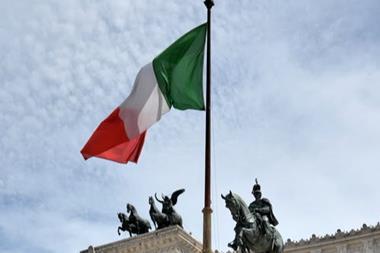Inarcassa firmly believes that strong governance and efficient investment processes are essential to excel in the management of pension fund assets. The scheme relies on effective decision-making, regular performance measurement for the fund, money managers and consultants, as well as transparency and communication to its members and the different governing bodies. Inarcassa ensures that its investment objectives are defined in order to meet the fund’s liabilities. In addition, strategic asset allocation (SAA) decisions receive a level of attention that reflects their importance to achieving the fund’s investment objective. The appropriate level of resources is dedicated to attracting the best consultants and money managers and the scheme’s investment mandates explicitly express its objectives, benchmarks and risk parameters.
Inarcassa’s diversified SAA contains asset classes that are defined by the most representative, transparent and replicable indices. The scheme uses total return gross indices (given the long time horizon of the investments), and euro hedged or local currencies indices (given that the liability is in euros). The hedge and the exposure to different currencies are managed through tactical asset allocation as well as through a currency overlay model, which is implemented via the new depositary bank. To increase its portfolio diversification and improve its efficiency and robustness, Inarcassa employs a top-down methodology at asset class and sub-class level to monitor the SAA.
Inarcassa has introduced alternative, inflation-linked and money-market asset classes to its SAA. Currently, the SAA is composed of six asset classes including fixed-income, equity, real estate, inflation-linked, alternative and cash, which are divided into 13 subclasses. The scheme also introduced two sub-classes in its SAA: global high-yield bonds (defined by the Merrill Lynch Global High Yield Unconstrained Euro Hedged) and emerging markets equity (defined by the MSCI EM Local Currency Gross). Their low correlations with other asset classes and sub-classes, as well as the high returns they are expected to generate, improve the overall diversification and efficiency of the portfolio. (With respect to the variations of interest rates, high-yield bonds have a low correlation with equities and investment-grade markets because of their greater sensitivity to economic cycles and company results.)
In the past 17 years, emerging markets have had a correlation of 0.51 with the S&P 500, 0.48 with the MSCI Asia and only 0.22 with the MSCI Europe & Middle East (although the correlations have been increasing due to the development of the underlying economies). Inarcassa’s allocation to EMGs has increased the scheme’s diversification by sector and has therefore expanded its pool of investment opportunities. The MSCI EM Index contains 731 firms of which about 100 are first class and include the likes of Samsung, Hyundai, Lukoil, Teva Pharmaceutical and Norlisk Nickel.
At sub-class level Inarcassa has eliminated the hedge fund managers that were too correlated with its hedge fund portfolio and were underperforming compared with their peers. Instead, the scheme has invested in private equity funds as well as commodities and volatility bonds.
Inarcassa uses a great deal of its resources to choose the best tools and methods to implement its asset allocation decisions. It selects the management methods and styles (be they direct or indirect, beta driven or alpha driven) according to the reference market. The pension scheme favours passive management for efficient markets such as US bonds, UK bonds, US equity and European equity and active management for inefficient markets such as emerging market equity, emerging market debt and high yield.
Inarcassa has strengthened its finance division by creating two departments. One department is responsible for the direct management of European equities and bonds, as well as the inflation class, while a second focuses on the selection and control of external money managers. Two or three advisers, who specialise in different geographic areas such as Europe, the US and the Asia-Pacific region, are responsible for supporting these departments. Inarcassa also assigns different functions to its advisers (risk management, performance measurement or manager selection) to eliminate potential conflicts of interest.
These developments (as well as the scheme’s policy of selecting the best independent equity and corporate bond managers for the US and Europe) have contributed to the scheme’s positive asset management results in the past 18 months. In 2004, the scheme saw a return of +10.3% on its internally managed equity class (+7.9% compared with the MSCI Pan-European and +9.4% for the MSCI World).
Highlights and achievements
Inarcassa’s primary objective while pursuing its institutional asset management goals is the continuous control and management of financial risk. The scheme ensures that it meets this objective by employing an efficient investment process together with a diversified asset allocation. Through a careful selection of investment tools, the scheme ensures the measurement, analysis, control and management of volatility such as VAR, P/E, B/V, dividend-yield, correlations, beta, returns, maturities, ratios, concentrations, duration, modified duration, PVBP, convexity and default probability analysis.














No comments yet